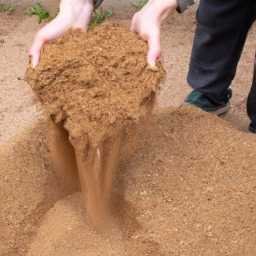Improve Sandy Soil How To Garden
Table of Contents []
- How To Improve Sandy Soil For Gardening
- Features of Sandy Soils For Gardening
- Case Studies
- Frequently Asked Questions (FAQs)
- Mistakes People Make With Sandy Soils For Gardening
- Best Practices For Improving Sandy Soils For Gardening
How To Improve Sandy Soil For Gardening
Summary
Improving sandy soil for gardening can prove to be difficult, however with a few tips and tricks it is possible to create the perfect sandy soil for your plants and flowers to thrive in. This article covers the features, benefits, pros and cons, case studies, FAQs, mistakes people make and best practices when it comes to improving sandy soils for gardening. It also provides insights on popular subtopics such as soil amendments, soil coating, maintained pH, improved drainage and controlled air circulation, explaining how they each contribute to developing a better soil environment for cultivating plants.
Features of Sandy Soils For Gardening
Sandy soils are composed mainly of rock and mineral particles that are small in size and loosely compacted. These soils have fast water drainage, rapid nutrient absorption and are easy to work with when it comes to manual labor or mechanical cultivation. Sandy soils are usually exceptionally low in organic matter allowing for plenty of oxygen to enter the soil and promote root growth.
Benefits of Sandy Soils For Gardening
The most noteworthy benefit of gardening in sandy soils is the lower percentage of water retention and increased air circulation allowing for enhanced germination and faster plant growth. Sandy soils are usually also lower in salinity and can help raise water-saturated soil levels to improve soil fertility and nutrient content.
Pros and Cons of Developing Sandy Soils For Gardening
The main advantage of cultivating a sandy soil for gardening is the ease with which organic material is added to the soil and the increased rate of water absorption. However, the lack of organic matter in sandy soils means that while plants can sprout easily, they often face difficulties with continued health and growth. Additionally, sandy soils can dry out quickly, spreading salts in the process and resulting in water retention, compaction, and nutrient leaching.
Case Studies
To provide a better understanding of how sandy soil can be improved for gardening, we will look at two case studies.
Scenario 1:; Increasing Organic Content in Sandy Soil For Gardening
In this scenario a home owner has a patch of sandy soil in his backyard and wants to turn it into a garden. To do this, he adds compost, manure or any other organic material to his soil, ensuring it is mixed in well. This will help increase the organic content in the soil which in turn will improve the soil's ability to hold water and nutrients, creating an ideal growing environment for his plants.
Scenario 2: Adding Coating to Sandy Soil For Gardening
In this scenario a home vegetable grower has a patch of sandy soil in her backyard and wants to turn it into a vegetable garden. To do this, she adds a coating of gravel or compost to the soil and tills it in well. This will help create an impermeable surface on the soil which will help reduce water evaporation and retain nutrients in the soil.
Frequently Asked Questions (FAQs)
What is the best organic material to add to sandy soil for gardening?
Organic materials such as compost, manure, leaf mold, and aged sawdust are some of the best materials to add to sandy soils for gardening. They can help improve the soils water retention and nutrient content, creating an ideal growing environment for plants.
What type of soil coating is best for sandy soil for gardening?
Gravel or compost is the most commonly used type of soil coating for sandy soils. They help reduce water evaporation and retain nutrients in the soil, creating an ideal growing environment for plants.
How do I maintain a pH level in my sandy soil?
The soil pH level must be monitored regularly to ensure a balanced environment for your plants. A pH test kit can be purchased at a local gardening store and it is recommended that the pH range be kept within 6.5-7.5.
Mistakes People Make With Sandy Soils For Gardening
One of the most common mistakes when it comes to gardening in sandy soils is not adding enough organic material. Without the addition of organic material, the sandy soil can quickly become dry and nutrient deficient, making it difficult for plants to thrive. Additionally, many people make the mistake of tilling the soil too deeply which can result in compaction and poor water drainage. Finally, people often overlook the importance of maintaining a healthy pH level in their sandy soil.
Best Practices For Improving Sandy Soils For Gardening
The best practice for improving sandy soils for gardening is to add organic material, such as compost, manure, leaf mold, or aged sawdust, to increase the organic content in the soil and improve its ability to retain water and nutrients. Additionally, a coating of gravel or compost can also be added to the soil to help reduce water evaporation and maintain a balanced pH level. Finally, it is important to keep the soil well aerated to ensure adequate oxygen availability for the plants' roots.
Conclusion
Improving sandy soil for gardening can be a challenge, however with the right knowledge and know-how you can create the perfect soil environment for cultivating your plants and flowers. This article provides detailed insights into developing a sandy soil for gardening, including the features, benefits, pros and cons, case studies, FAQs, mistakes people make and best practices. By following these tips and tricks, you can make sure your plants and flowers get the best environment they need to thrive in.

Previous Page
